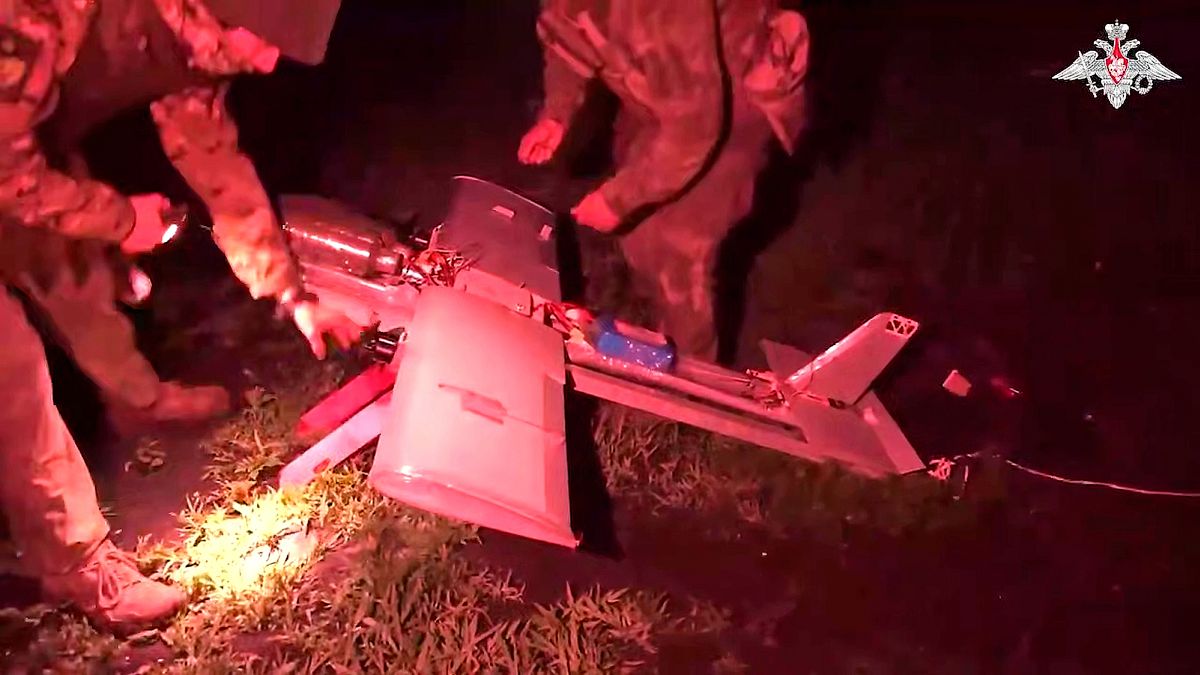

As the world continues to navigate complex international relations, the recent exchanges between Ukraine and Russia mark a noteworthy chapter in the ongoing geopolitical story. A series of reciprocal attacks have heightened tensions, emphasizing the intricate dynamics at play between the neighboring nations.
In a notable incident, a Ukrainian drone strike targeted an oil depot in Sochi, a city by the Black Sea celebrated for its revelries and resting peacefully under the mountain’s gaze. The attack culminated in a significant fire, sending plumes of dark smoke curling up into the air. In a statement, Veniamin Kondratyev, the regional governor, noted that more than 120 firefighters were engaged in suppressing the blaze fueled by a vast fuel tank, highlighting the intensive response efforts mobilized swiftly in the aftermath.
These developments merely punctuate what has already been one of the deadliest weeks in Ukraine in recent memory. The reverberations of violence were felt on multiple fronts, including a Russian drone assault on Kherson, claiming the lives of two individuals, and another devastating attack on Ukraine’s capital, Kyiv, resulting in 31 casualties. Even the city of Mykolaiv bore the brunt of conflict, suffering from strikes that wounded seven people amidst the continuing exchanges.
Amidst this backdrop, the global stage has observed movements from key international players. In a demonstration of strategic maneuvering, former U.S. President Donald Trump has ordered the deployment of two nuclear submarines near Russian territory. This decision follows vocal threats from Dmitry Medvedev, Russia’s former President, underscoring the complex interplays of military posturing that affect not only Ukraine and Russia but the wider geopolitical canvas.
Simultaneously, the air is thick with new threats as Russia’s President Vladimir Putin hints at the possibility of deploying hypersonic missiles in Belarus. This move is framed against a historic narrative, where Russia first wielded the Oreshnik missile against Ukraine in the past, targeting a factory indirectly linked to Soviet ambitions. Such disclosures have naturally drawn the attention of European powers, raising questions and concerns about the long-term implications of these military developments.
Within the heart of these exchanges, Ukraine has additionally claimed responsibility for strikes on a Russian military plant and a drone storage airbase, furthering the cycle of attacks and responses that characterizes the current climate. According to Vyacheslav Fedorishchev, the Governor of Samara Oblast, enemy UAVs targeted an industrial facility in Novokuibyshevsk, once again placing focus on the active engagements on both sides.
This perplexing mix of diplomacy, military actions, and rhetoric illustrates the delicate balance needed to navigate through the ongoing tensions. As both nations continue their exchanges, the world watches closely, yearning for pathways towards a more peaceful solution that honors human lives and international stability.
In these times, the need for mindful reflection and constructive dialogue is evident. As global citizens, a collective hope for a peaceful resolution steadfastly remains alive, envisioning a dawn where dialogue triumphs over discord.
Source: {link}
